New Concrete
Term
Course
Instructor
Partner
Program
Course
Instructor
Partner
Program
Fall Harvard GSD
SCI 6364 Thermal Monocoques
Jonathan Grinham
Stephanie Lloyd
Grasshopper C#
SCI 6364 Thermal Monocoques
Jonathan Grinham
Stephanie Lloyd
Grasshopper C#
New Concrete: Evaluative Framework for Alternative Tectonics
New computational design and fabrication methods might present opportunities to improve the thermal performance of concrete construction for new buildings. We introduce a new framework for evaluation that addresses thermal and energy savings criteria from the scale of material composition to the scale of building components. Focusing on material composition, we will study the thermal performance of new concrete alternatives. By closely tuning material porosity, we will use parametric design scripts to understand the threshold between thermal attenuation of heat gains and thermal bridging. Finally, we will study three disparate tectonics; the gabion, the brick, and rammed earth, in order to propose new concrete tectonics that can be produced off-site and assembled in-situ. Together, these scales of research will produce a matrix of solutions that propose a holistic understanding of how the porosity and tectonics of new concrete alternatives might perform thermally, when evaluated according to specific site conditions. This evaluation framework uses a simulation-based computational workflow. We will apply the evaluation framework of these three different tectonics to a site in Poughkeepsie, NY. The study shows that the evaluation framework can inform the selection of material tectonics for early design schemes.
Key words: thermal performance, evaluative framework, material porosity, material tectonics, concrete
Framework
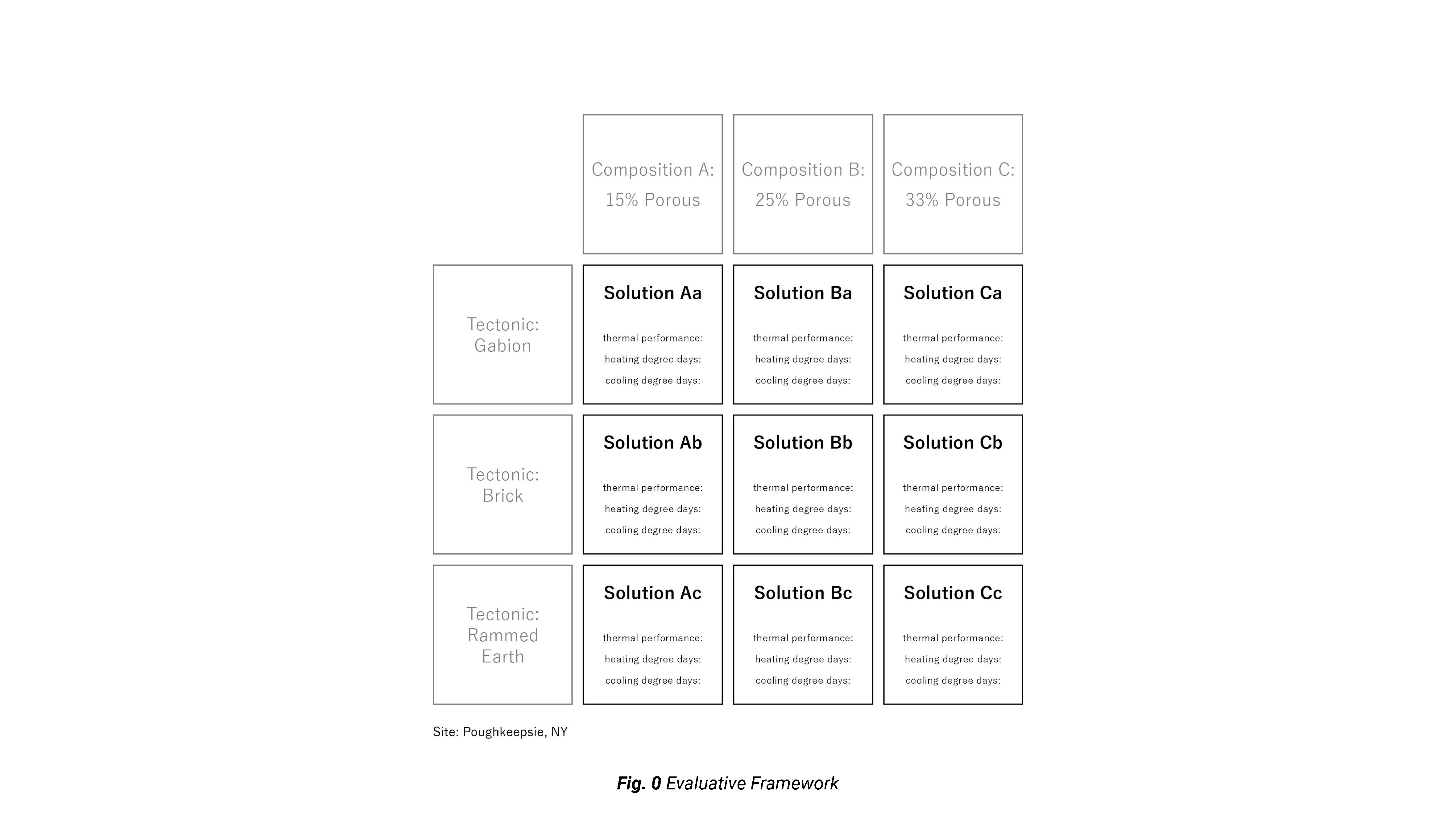
Analytical Model
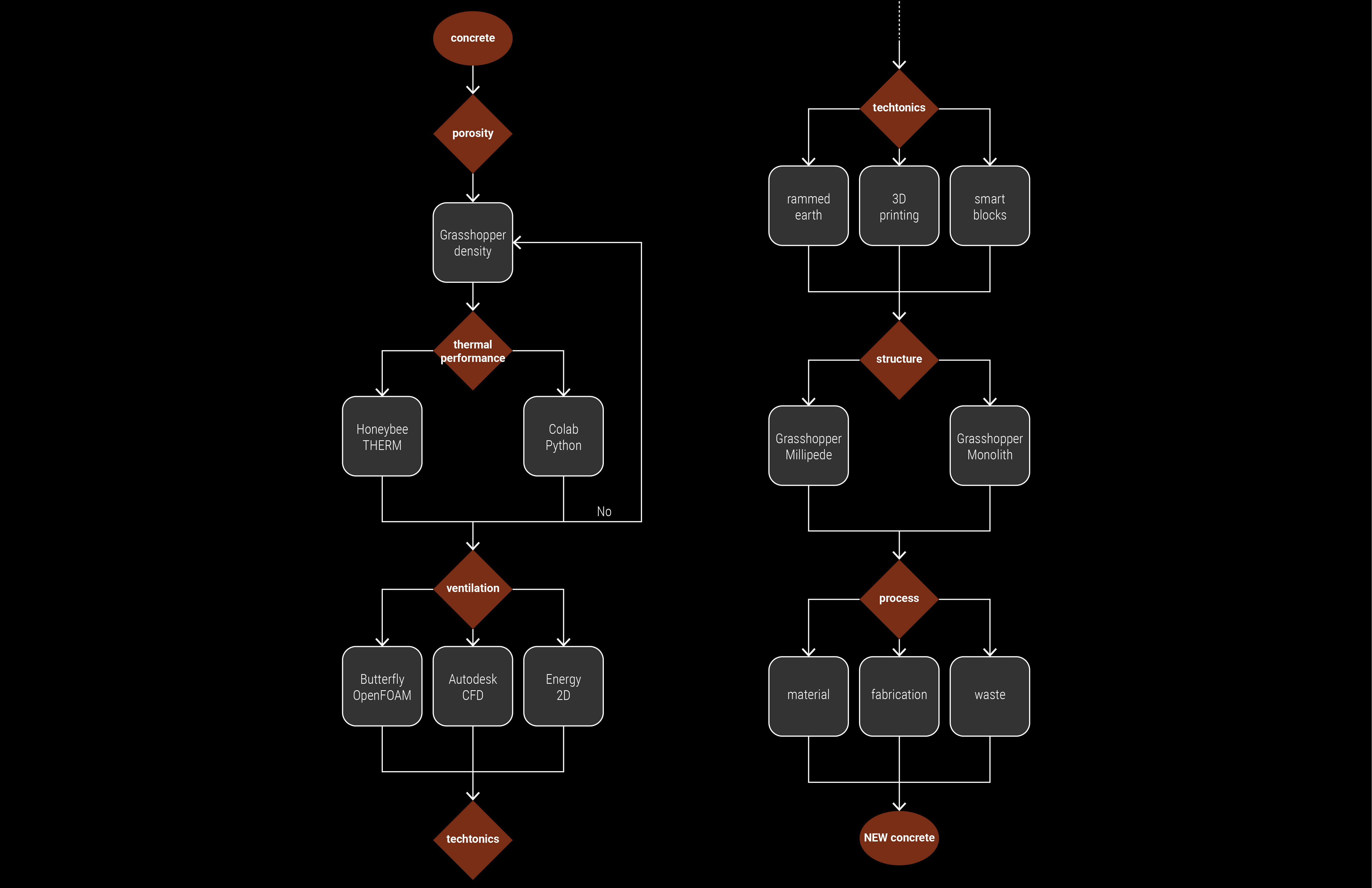
Analytical Model
Assuming a constant wall thickness of eight inches, we analyzed three building tectonics; the gabion, the brick, and rammed earth. We also assumed a typical concrete mixture with a conductivity of 1.73 W/m-k. The density varies with each output of the matrix, as a product of both the specific porosity and tectonic.
Using THERM, an analytical program that models two-dimensional heat-transfer effects, we were able to import the computationally designed porous sections in order to solve for the respective U-values. The THERM and grasshopper model allows us to compare the relationship of porosity and U-value, layout and U-value, and geometry and U-value. Through using a python script within the grasshopper environment, we were able to record the data continuously from the plugin. The data is later used for further analysis.
The data is later plugged into another python script based on Professor Jonathan Grinham’s CoLab Thermal Mass analysis. We used the respective U-values to solve for the respective tectonic’s biot number, diffusivity, and thermal time constant.
biot = (hx_rate*L)/conductivity
thermal diffusivity α = k / p * Cp
Fourier number Fo=αt / L2
Thermal time constant = (density*specific_heat*volume)/(hx_rate*area)/3600
(*the hx_rate is replaced with U-factor derived from our initial analysis, the density is recalculated based on the porosity)
Then, by assuming a standard building size of 3.5 meters by 4 meters, and incorporating the weather data for Poughkeepsie, we are able to solve for the number of heating and cooling days.
Using THERM, an analytical program that models two-dimensional heat-transfer effects, we were able to import the computationally designed porous sections in order to solve for the respective U-values. The THERM and grasshopper model allows us to compare the relationship of porosity and U-value, layout and U-value, and geometry and U-value. Through using a python script within the grasshopper environment, we were able to record the data continuously from the plugin. The data is later used for further analysis.
The data is later plugged into another python script based on Professor Jonathan Grinham’s CoLab Thermal Mass analysis. We used the respective U-values to solve for the respective tectonic’s biot number, diffusivity, and thermal time constant.
biot = (hx_rate*L)/conductivity
thermal diffusivity α = k / p * Cp
Fourier number Fo=αt / L2
Thermal time constant = (density*specific_heat*volume)/(hx_rate*area)/3600
(*the hx_rate is replaced with U-factor derived from our initial analysis, the density is recalculated based on the porosity)
Then, by assuming a standard building size of 3.5 meters by 4 meters, and incorporating the weather data for Poughkeepsie, we are able to solve for the number of heating and cooling days.
Computational Model

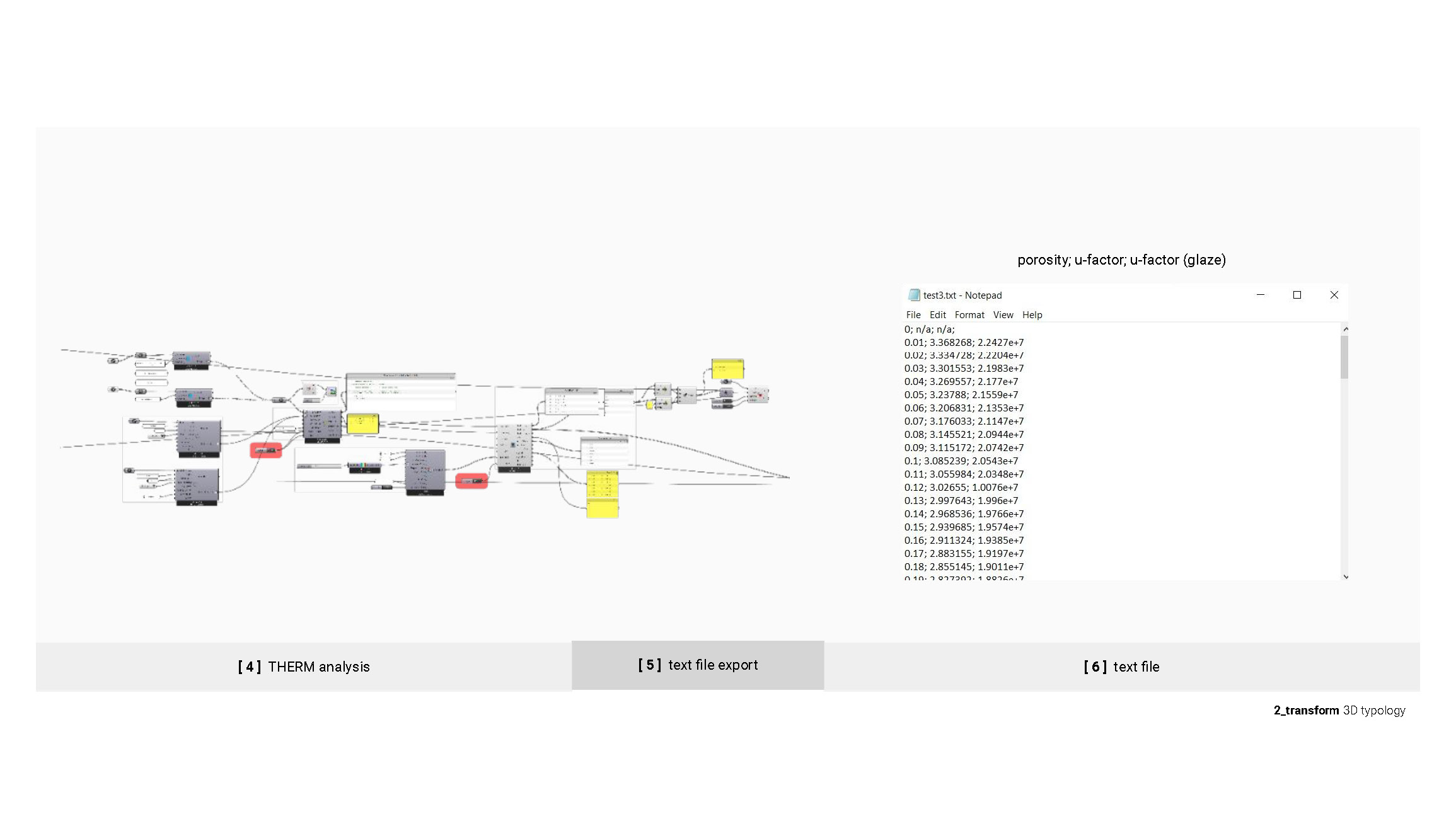
Computational Model
By using a grasshopper plugin, we were able to quickly prototype various iterations of porous cross-sections, focusing on both the pattern and density of the porosity. Originally, we modelled all of the porous openings within a cross section as the same size and proportions. In initial analysis of the performance, we realized a need for varied geometric porosities, and therefore created more irregularity of porous proportions defined by parametric definitions.
Results
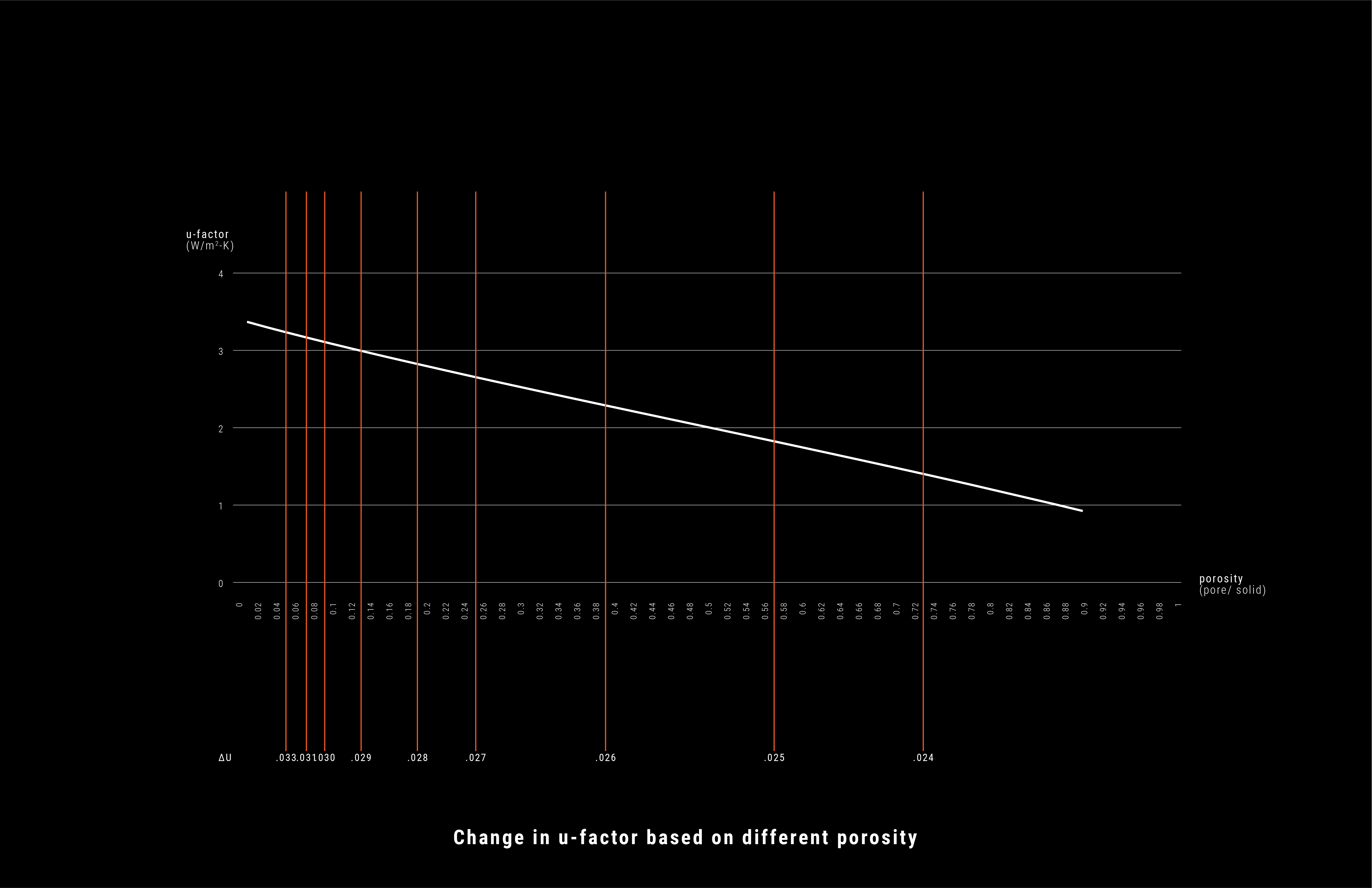

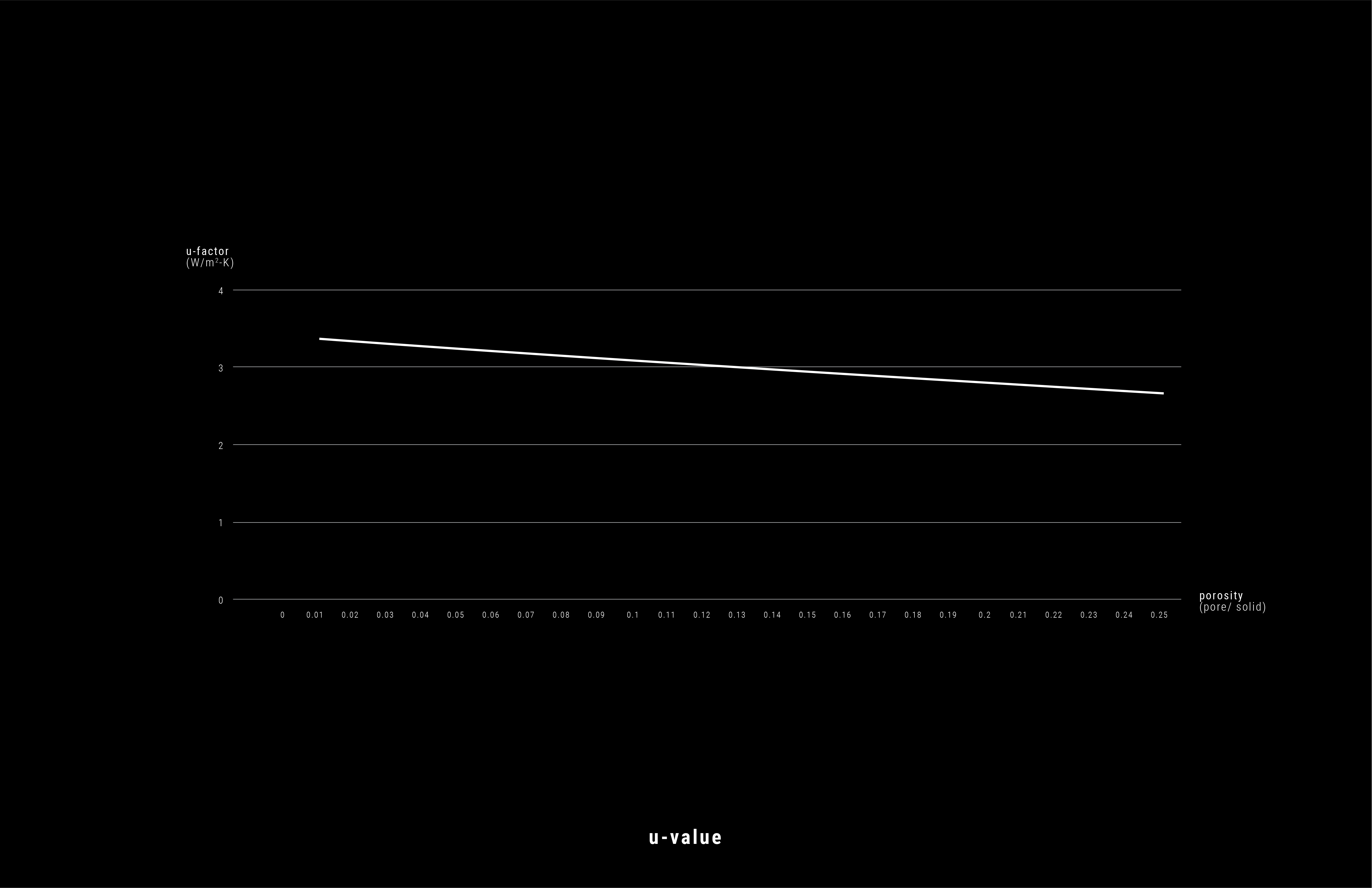



Porosity Study














Simulation



Potential Design
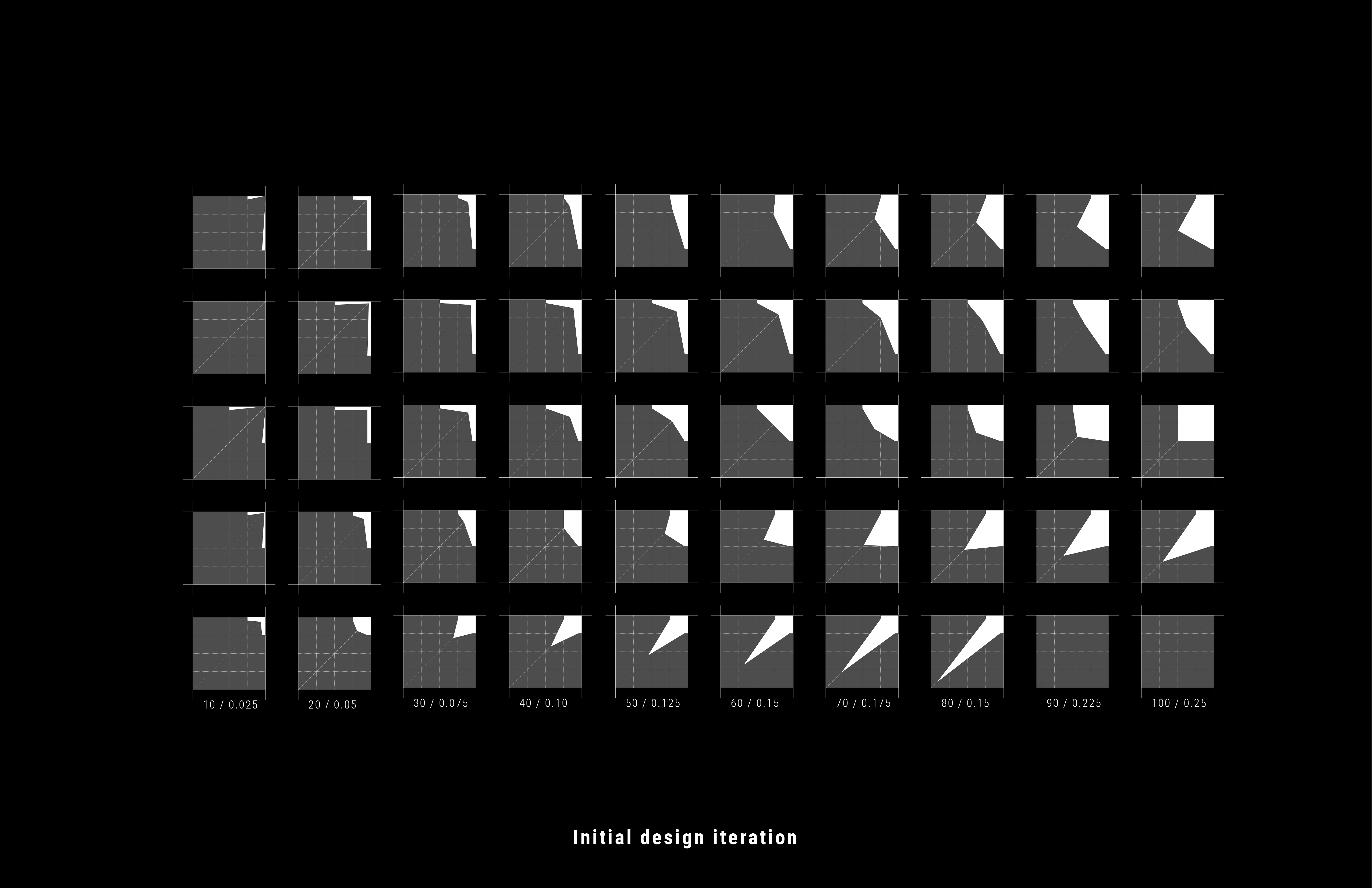





Tectonic
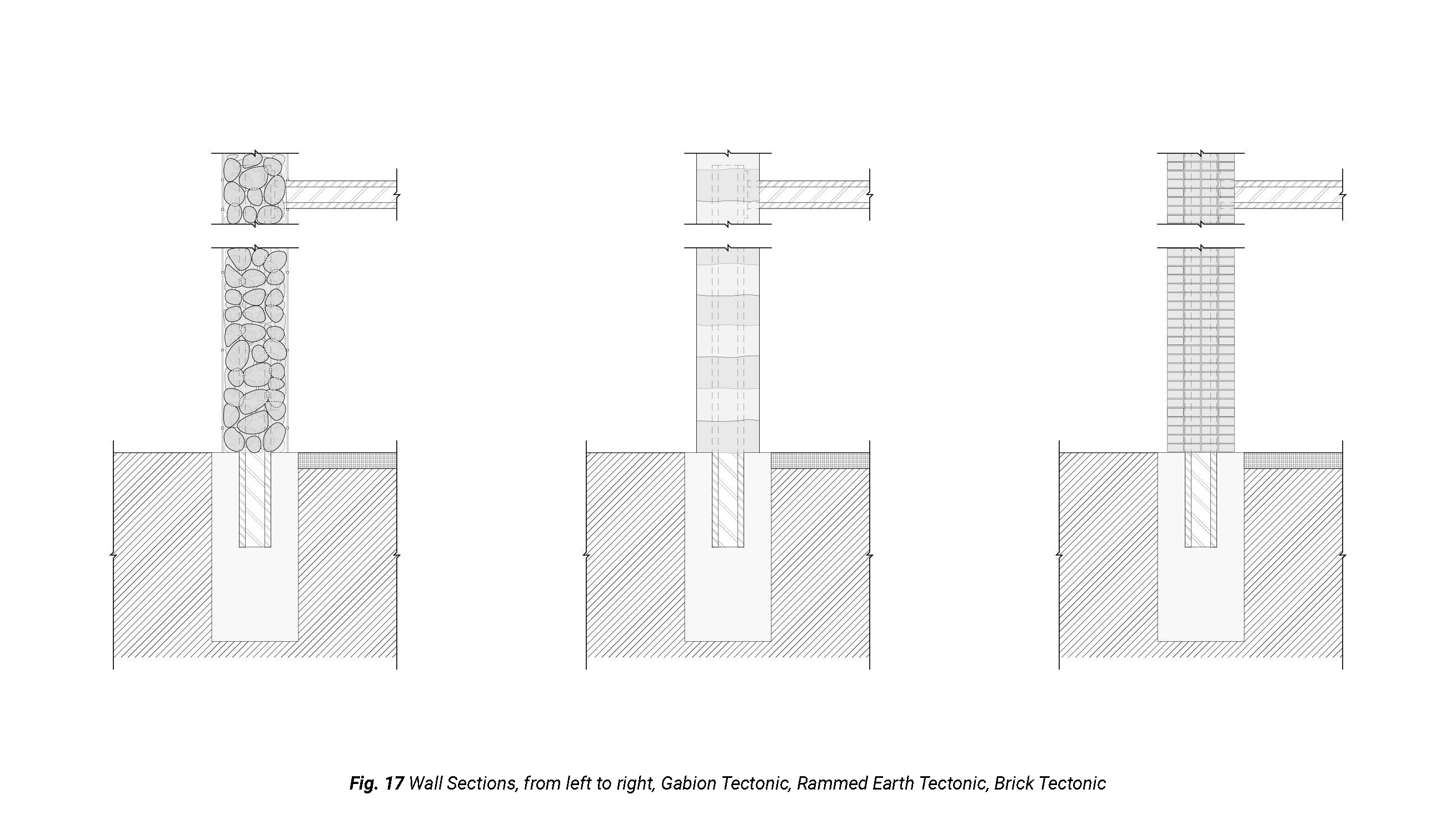
Tectonic
We have chosen to focus on three main building tectonics; the gabion, the brick, and rammed earth. Each of these tectonics can be understood as a thermal monocoque; the isomorphic nature to their material construction provides a simplicity in both the design and analysis of thermal performance. Additionally, within the context of contemporary building practices, they each have specific advantages and disadvantages. Gabions have the potential to incorporate reclaimed and rubble materials, effectively offsetting carbon emissions, but are generally seen as porous and are not normally used as barriers between exterior and interior conditioned spaces. Brick is a ubiquitous building tectonic in the Northeastern regions, making labor cheap and widely available. Rammed earth, however, is associated with high construction costs, despite the fact that the technique usually has lower levels of embodied carbon than traditional concrete construction.